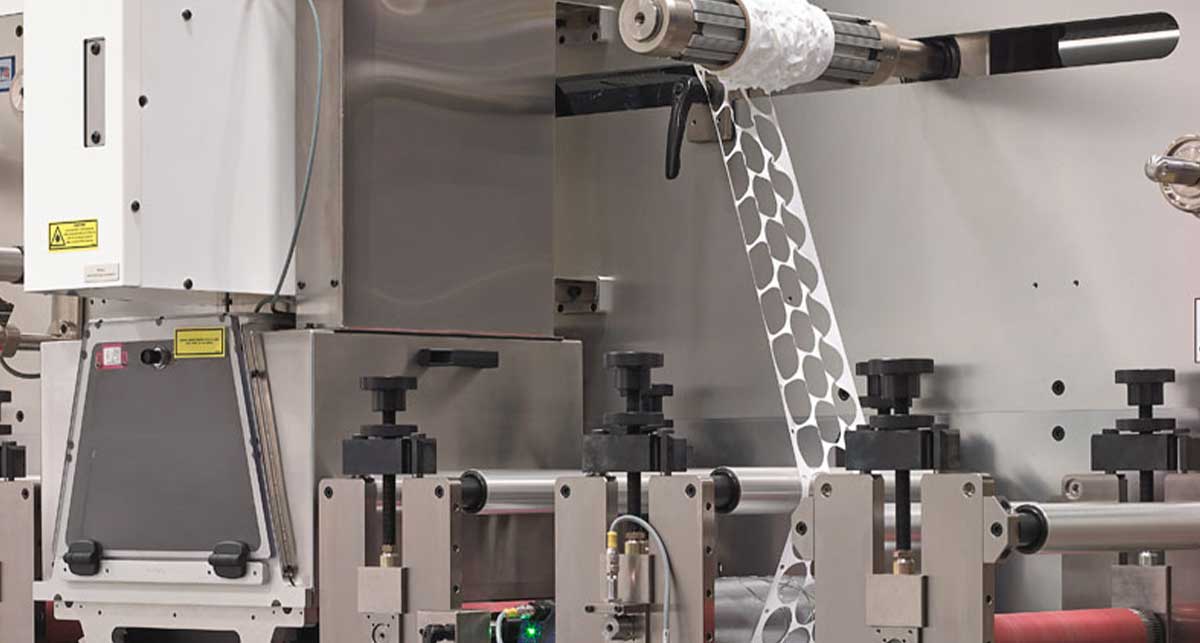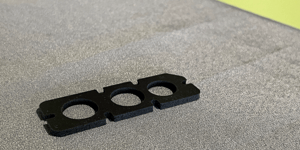When it comes to medical applications, who doesn’t want components made from clean, safe, and effective materials?
Yet, in the rush to order product, many businesses find themselves with large quantities of expensive, functionally ineffective gasketing material on their hands (or rather, shut away in storage).
In our three decades spent building flexible product components, Strouse has encountered a wide range of foam gasket materials. Based on our experiences, we’re confident in recommending materials that have functioned well in medical settings.
Before diving into the foam gasket materials we use for medical applications, we’ll start by reviewing some factors you’ll want to consider for medical gaskets.
Foam Gasket Material— Medical Considerations
The best way to decide on gasketing material is to consider the factors listed below in relation to your application. The factors that are important to you will dictate what materials you should consider.
TOLERANCES
It’s considerably more difficult to achieve tight die cut tolerances with foam due to its thickness and behavior. Your tolerances may dictate a certain production method which may limit your options for foam material.
STERILIZATION
The foam used in medical gaskets must withstand any sterilization planned, or it might risk failure.
Yet, while you may enter into the process expecting heavy sterilization fees, that isn’t always the case: many gaskets don’t necessarily need sterilization because they’re not doing anything involving an open wound.
Skin contact alone might not be enough to warrant full-blown cleanroom production or post-sterilization (think band-aids). However, sterilization is necessary when the product is in contact with broken skin or biofluids.
RIGIDITY
Gasket rigidity is essential to its functionality, but achieving the exact properties to build a successful and functional product can be challenging.
Flexible material converters utilize strategies like creating stack-ups with stiffener layers to combine favorable material properties with others desirable to the foam.
COMPRESSIBILITY FACTOR
Every gasket material has its own compressibility, but different properties suit certain occasions.
For instance, low-compressibility gaskets are easy to compress but unable to spring back easily, and their seals can be disrupted by a strong force. When too much air or water flows through a low-compressibility gasket, the strength of the forces can blow the gasket.
High-compressibility gaskets can withstand more pressure but are more challenging to compress in order to form a seal in the first place. These materials are more resistant to force because they’re pressing back up against the force and holding their shape.
3 Foam Gasket Materials for Medical Applications
With so many types of foam gaskets to choose from, it’s challenging to know where to begin. But when it comes to gaskets for medical applications, you want gaskets made from proven materials with properties that suit the intended purpose.
#1: POLYETHYLENE FOAM
Polyethylene is one of the go-to materials for medical foam.
Not only is polyethylene foam compatible with most sterilization methods, but it’s also reasonably cheap compared to other medical gasketing materials.
Polyethylene is widely available in a range of different adhesive configurations, either laminated on one or both sides.
In terms of manufacturability, polyethylene can typically be cut on a rotary die cutting press without any problem.
The main drawback of polyethylene foam is its lack of recoverability. Many gaskets can spring back to their original shape after being crushed, but polyethylene lacks this ability.
Once polyethylene has been crushed, it essentially remains in that bent or squished shape. For this reason, polyethylene is not the best choice for gaskets that are meant to be disassembled because it will struggle to recover and fill the same space it did previously.
Polyethylene is also incredibly soft and not very suited for mechanical joining, so it needs adhesive to create a seal on surfaces.
#2: SILICONE FOAM
Silicone foam gaskets are resilient gaskets that sit comfortably on the skin and don’t get crushed.
Silicone foam is an excellent material for stick-to-skin applications, and unlike polyethylene, the shape of silicone has good recovery.
Due to its resilience, silicone foam can withstand high pressure, which is helpful in medical products such as liquid pumps. Unlike polyethylene foam, it can also perform well in mechanical sealing without adhesive.
Due to its proficiency in non-adhesive gaskets, silicone foam is an excellent choice for temporary gaskets in applications that must be reopened.
The downsides of silicone foam are generally straightforward: it’s expensive, adhering to it is a struggle, and specific methods, like rotary die cutting, risk cutting silicone poorly.
#3: VHB FOAM
VHB foam tape (very high bondage foam tape) is a common medical gasketing material. However, it’s worth noting that it’s utilized as a device component rather than attached to the skin.
The bonding strength of VHB adhesive is far greater than that of the other gaskets we’ve mentioned thus far. For instance, if you tried to pull apart two pieces of polyethylene, you likely could. However, pulling apart two pieces of VHB would be a struggle.
VHB utilizes a powerful acrylic adhesive that isn’t intended for stick-to-skin use. VHB foam gaskets are ideal for permanent applications that benefit from high-strength gasketing materials that withstand high pressure.
Other properties of VHB foam tape include its viscoelastic properties, which give it additional conformability, and the wide range of VHB products that can benefit unique applications. You can source VHB based on thickness, density, and hardness to fit the needs of your product.
Choosing the Right Gasket Foam
At this point, you may have noticed how interwound gasket material is with your production. Each unique application requires careful consideration for material selection, including your gasket.
Before you get started on choosing your foam or reaching out, you’ll want to ask yourself the following questions:
1. What is the application?- Does it need to withstand pressure or liquids?
- Is it in a device? Fastened to skin?
These answers will narrow your search for materials that are manufacturable and suited to your end purpose. Don’t rush into buying materials that could turn production into a headache later on— instead, reach out to a flexible material converter for a quote and turn your design into a reality.
Still have questions on the manufacturing or die cutting process? Hoping to read more about gasket materials? You can find all of this in our Learning Center.







